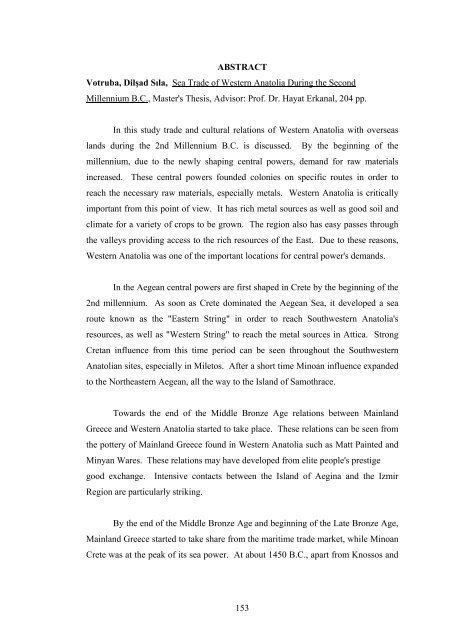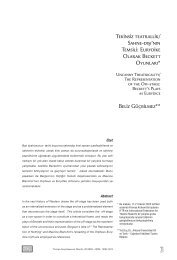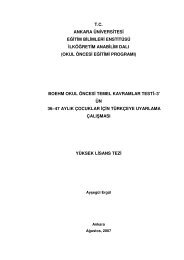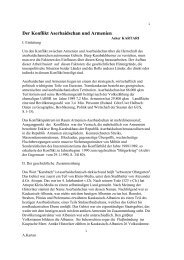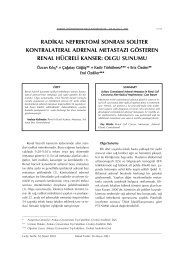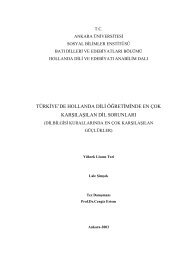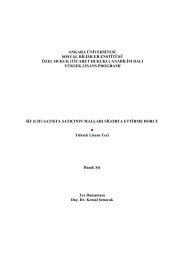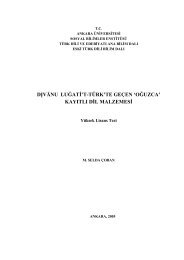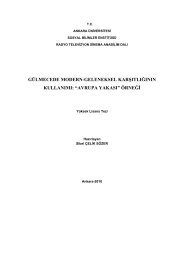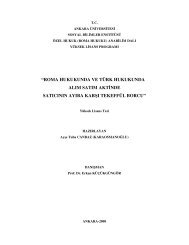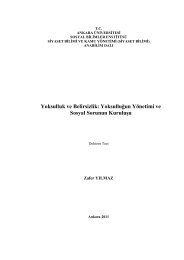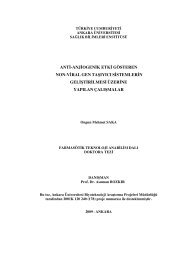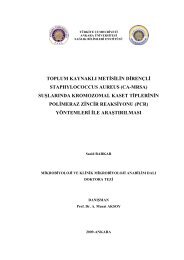tc ankara üniversitesi sosyal bilimler enstitüsü arkeoloji
tc ankara üniversitesi sosyal bilimler enstitüsü arkeoloji
tc ankara üniversitesi sosyal bilimler enstitüsü arkeoloji
Create successful ePaper yourself
Turn your PDF publications into a flip-book with our unique Google optimized e-Paper software.
ABSTRACT<br />
Votruba, Dilşad Sıla, Sea Trade of Western Anatolia During the Second<br />
Millennium B.C., Master's Thesis, Advisor: Prof. Dr. Hayat Erkanal, 204 pp.<br />
In this study trade and cultural relations of Western Anatolia with overseas<br />
lands during the 2nd Millennium B.C. is discussed. By the beginning of the<br />
millennium, due to the newly shaping central powers, demand for raw materials<br />
increased. These central powers founded colonies on specific routes in order to<br />
reach the necessary raw materials, especially metals. Western Anatolia is critically<br />
important from this point of view. It has rich metal sources as well as good soil and<br />
climate for a variety of crops to be grown. The region also has easy passes through<br />
the valleys providing access to the rich resources of the East. Due to these reasons,<br />
Western Anatolia was one of the important locations for central power's demands.<br />
In the Aegean central powers are first shaped in Crete by the beginning of the<br />
2nd millennium. As soon as Crete dominated the Aegean Sea, it developed a sea<br />
route known as the "Eastern String" in order to reach Southwestern Anatolia's<br />
resources, as well as "Western String" to reach the metal sources in Attica. Strong<br />
Cretan influence from this time period can be seen throughout the Southwestern<br />
Anatolian sites, especially in Miletos. After a short time Minoan influence expanded<br />
to the Northeastern Aegean, all the way to the Island of Samothrace.<br />
Towards the end of the Middle Bronze Age relations between Mainland<br />
Greece and Western Anatolia started to take place. These relations can be seen from<br />
the pottery of Mainland Greece found in Western Anatolia such as Matt Painted and<br />
Minyan Wares. These relations may have developed from elite people's prestige<br />
good exchange. Intensive contacts between the Island of Aegina and the Izmir<br />
Region are particularly striking.<br />
By the end of the Middle Bronze Age and beginning of the Late Bronze Age,<br />
Mainland Greece started to take share from the maritime trade market, while Minoan<br />
Crete was at the peak of its sea power. At about 1450 B.C., apart from Knossos and<br />
153


